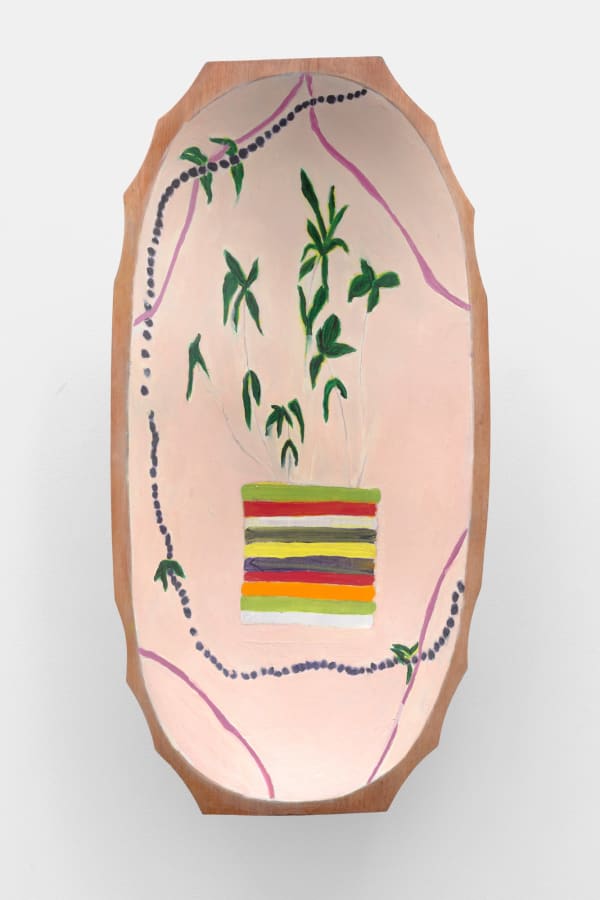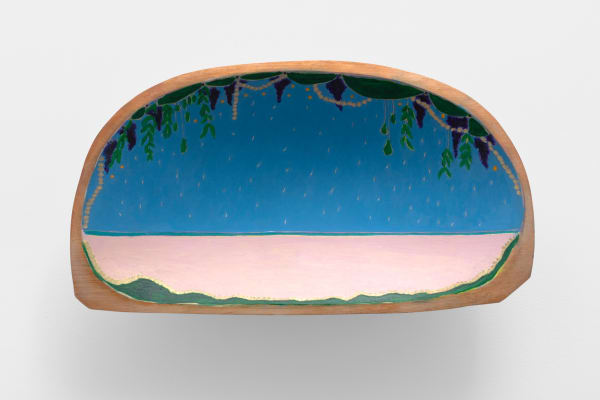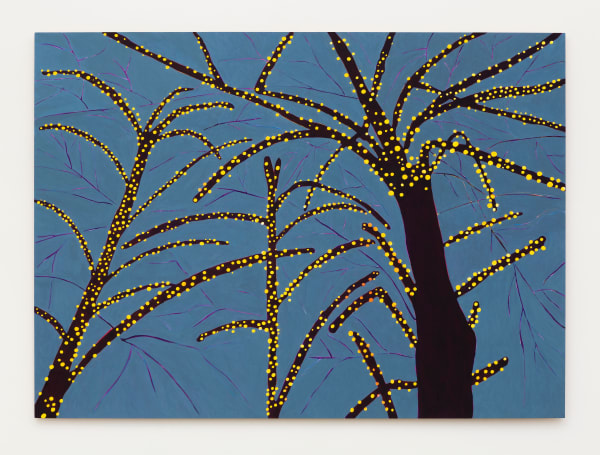lusco – fusco Patricia Leite
Sept 19 - Oct 12, 2018
Patricia Leite’s exhibition lusco-fusco [last light of the day] presents a new body of painting inspired by momentary meetings of darkness and light. Inviting us to grasp the sensation of an object alight, Leite portrays light alive with vibration, at once optically tangible and sentimentally fleeting.
Leite’s paintings are derived from ‘sketchbook’ of photographs, akin to a visual diary collected from various sources. These referential images present a point of departure for the tone and form of each painting. As Leite elaborates on the sentiment that inspired her to approach each scene, she freely abstracts and experiments to come to a playful somberness, where soft masses of color are seemingly suspended in nimble outlines of pointed light.
In works such as Veneza [Venice] (2018), Leite captures the essence of a familiar landscape, rendering an iconic, instantly recognizable scene as well as an intimately manifested memory. As timid whispers of light become preciously transient under an immense sky and sea, Leite activates both a personal and an archetypal poetry.
The painting which lends its name to the exhibition, lusco-fusco [last light of the day] (2018), presents a point in time that has always transfixed the artist; when the moon rises over the embers of sunset, and the day is neither in darkness nor light. This melancholic panorama, allows the warmth and sunlight of the day to dissolve into the night sky in a smoke of lyrical brushstrokes that echo the dense foliage below. The encounter of these two color fields is mediated by a small glowing moon which sits on the boundary between them.
Inspired in part by the artist’s recent travels through Europe and residency in Brussels, these works follow Leite’s formal progression as she encounters new landscapes, as well as a renewed affection for her native landscape of Minas Gerais in Brazil, after so many months abroad. These juxtaposed geographies leave traces of humor as they are presented side by side. Works such as “Jabuticabeira” (2018), which takes its name from a Brazilian tree covered in ball shaped fruits, actually depicts trees in the Netherlands covered in round Christmas lights. In works like these Leite’s subtle sensibility and technical handling of hue becomes so striking.
Beginning her paintings on a white ground, Leite cast layers of shadow around points of light to build form. “Jabuticabeira” (2018), therefore, begins with hundreds of small yellow bulbs, with dark trees later added around them. Leite dims her canvases following a natural light progression, only arriving at a grey overcast sky after composing a blue expanse beneath it.
As Leite painstakingly carves darkness from light to create depth, the highlights of the painting pierce directly through the many layers of synthesized hues. Leite further charges this point of contact between light and dark by carefully curating small slippages of color that blur the borders of a white moon or sun kissed horizon, mimicking the optical effect of light mixing color. In Moonlight Mood (2018), these eloquently blurred outlines meet a velvet darkness as the viewer’s eye darts fluidly from the saturated surface of the painting to the white ground of highlights. Creating a vibrating, luminous sensation, this pictorial technique becomes the formal, conceptual and narrative gesture of Leite’s painting.
Here, light is animated, alive, seemingly pulsing or moving in front of us. In her fusion of visual effect and emotional affect, Leite allows us to perceive that fluctuating moment, when a preciously ephemeral light encounters – and dances with – form.










